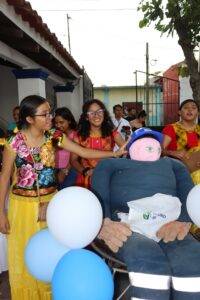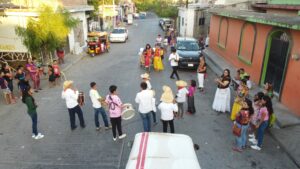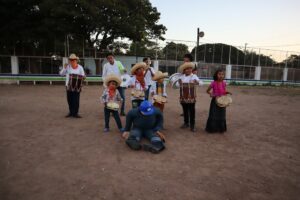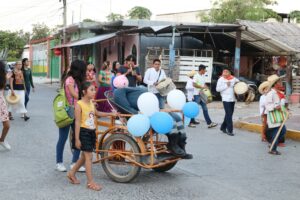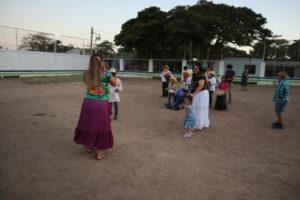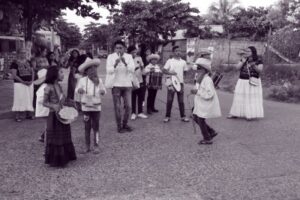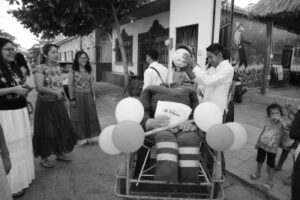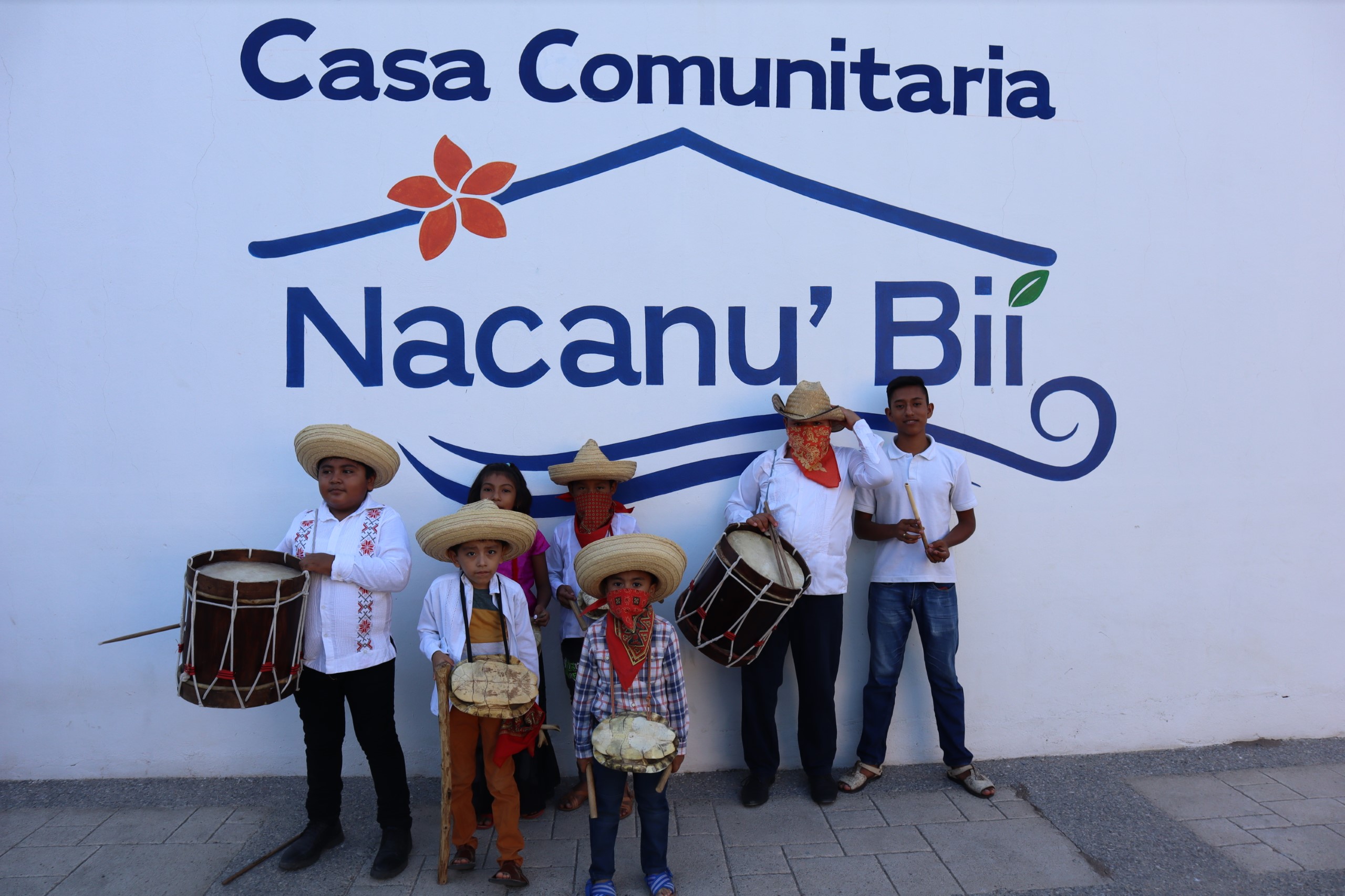The ancestral tradition of the ‘Viejo’ or ‘Huelo’ has once again come to life in the streets of Juchitán as part of the emotional farewell to the year. This colourful parade, where characterised figures walk through the streets with joyful dances visiting homes in search of an ‘aguinaldo’ (Christmas treat or bonus), was carried out with enthusiasm by the team of the Casa Comunitaria Nacanu’ Bií and the members of the Prehispanic music group.
The colloquial cry “Zuyaa’ huelu laa?” (will the ‘Huelo’ dance?) resounded, asking for permission to begin its fascinating dance. In addition, an ephemeral character that “dies” when burnt at the end of the year was built: a doll made of old clothes, stuffed with sawdust and rockets, symbolically representing the closing of the annual cycle in Isthmian homes.
The tour travelled through the picturesque streets of Séptima Sección, culminating at the Santa Martha Children’s Recreational Centre. The ’Huelo’ doll, which led the procession, was dressed as a ‘iolico’, word used here to describe the people who work in the wind energy sector. César Jadiel, from the Prehispanic music group, enlivened the parade with his rendition of ‘Huelo’, accompanied by the infectious music of tortoise shells, drums and reed flutes. Members of the Pre-Hispanic music workshop, dressed as ‘Viejos’, followed in their wake, along with the participation of neighbours, Xquendas, members of Nacanu’ Bií and corporate volunteer Yessica Ríos Martínez.
During the tour, one of the neighbours joined in with his reed flute, expressing his appreciation: “Congratulations for preserving these traditions. It is gratifying that you share your activities in the Community House with the neighbours and inspire the children to continue practising ancestral music”, commented Elvis Valdiviezo López grateful to us.
Upon arrival at the Santa Martha Centre, the attendees were offered horchata water and witnessed the emotional burning of the ‘Huelo’, symbolising the end of a year full of activities at the Casa Comunitaria. We as ‘project coordinators’, identified as Laanu, started a new cycle and a new year.
